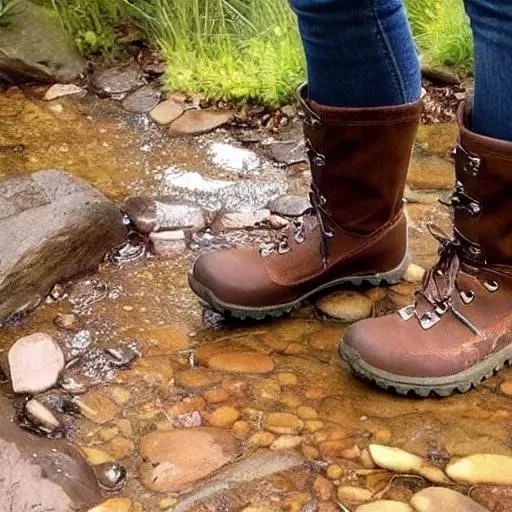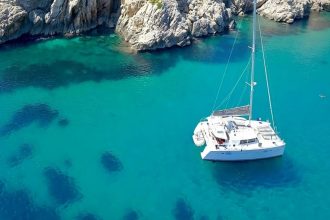For any avid hiker, the promise of dry feet amidst a torrential downpour or a surprise stream crossing is nothing short of a dream. The market is saturated with claims of “waterproof hiking boots,” a seemingly indispensable piece of gear for navigating the unpredictable wilderness. But as many seasoned adventurers will attest, the reality can often feel more like a cruel joke, leaving one to ponder: are these boots genuinely impermeable bastions against moisture, or merely optimistic suggestions in the face of nature’s relentless wetness?
The answer, as with most complex technologies, is nuanced, lying somewhere between marketing hype and scientific marvel. Modern waterproof hiking boots are engineered with sophisticated materials and intricate construction methods, designed to repel external water while ideally allowing internal moisture vapor to escape. This delicate balance aims to prevent both the ingress of rain and the accumulation of sweat, crafting an environment where comfort and protection can coexist, even in the most challenging conditions. Yet, the journey from factory floor to a puddle-strewn trail is fraught with variables, influencing how effectively these boots perform under genuine stress.
| Technology Name | Description & How it Works | Pros | Cons | Durability & Maintenance |
|---|---|---|---|---|
| Gore-Tex® | A microporous membrane with billions of pores per square inch, small enough to block liquid water droplets but large enough to allow water vapor (sweat) to escape. Typically laminated to fabric layers. | Excellent, long-lasting waterproofing; high breathability; widely trusted. | Can be expensive; breathability diminishes if outer fabric wets out; effectiveness can be compromised by dirt/oils. | Very durable if cared for. Requires regular cleaning and reapplication of DWR to outer fabric. |
| eVent® / Pertex® Shield | Utilizes an expanded PTFE (ePTFE) membrane like Gore-Tex, but with an oleophobic (oil-repelling) treatment integrated directly into the membrane structure, allowing for “direct venting” and reportedly higher breathability. | Often considered more breathable than traditional Gore-Tex, especially in high-exertion activities; reliable waterproofing. | Can be less widely available; specific care instructions might be required. | Good durability; benefits from regular cleaning and DWR reapplication; |
| Proprietary Membranes (e.g., Keen.Dry, Merrell M-Select DRY, FutureLight) | Brand-specific waterproofing technologies, often using similar principles to Gore-Tex or eVent, but developed in-house. May vary in material composition (e.g., polyurethane-based). | Can offer competitive performance at a potentially lower price point; allows brands to innovate. | Performance can vary significantly between brands and models; less independent testing/branding recognition. | Durability varies by brand. General care and DWR maintenance are recommended. |
| Durable Water Repellent (DWR) Coatings | A polymer coating applied to the outer fabric of boots, causing water to bead up and roll off rather than soaking in. It does not provide full waterproofing on its own but enhances it. | Prevents outer fabric from “wetting out,” maintaining breathability of underlying membrane; easy to reapply. | Wears off over time with abrasion and washing; not a standalone waterproofing solution. | Requires frequent reapplication to maintain effectiveness, especially on high-wear areas. |
The core of most “waterproof” claims rests upon advanced membrane technologies, with Gore-Tex® being the most recognizable pioneer. These incredibly thin, porous barriers are meticulously engineered to feature billions of microscopic pores per square inch. Crucially, these pores are significantly smaller than a water droplet, effectively barring liquid water from penetrating the boot’s interior. Conversely, they are substantially larger than a water vapor molecule, allowing perspiration to escape. This ingenious “one-way street” mechanism is what grants boots their dual promise of waterproofing and breathability, preventing both external inundation and internal clamminess. Other formidable players like eVent® and various proprietary membranes from brands such as The North Face’s FutureLight™ or Merrell’s M-Select™ DRY employ similar, albeit distinct, molecular architectures to achieve comparable protective feats.
However, the membrane itself is merely one component of a holistic waterproofing system. The boot’s construction, meticulously involving seam sealing, the integration of durable water repellent (DWR) coatings on the outer fabric, and the overall design, profoundly dictate its real-world performance. A boot might boast a top-tier membrane, yet if its seams are poorly sealed or if water can simply cascade over the boot’s collar from an unexpected plunge, its waterproof integrity is fundamentally compromised. As Dr. Eleanor Vance, a leading materials scientist specializing in outdoor textiles, cogently explains, “The magic isn’t just in the membrane; it’s in the entire system, from the hydrophobic treatment on the exterior to the precise stitching and lamination. Any weak link, and the chain breaks;”
Industry examples abound, showcasing both triumphs and occasional frustrations. Brands like Salomon and Hoka, renowned for their innovative trail footwear, consistently integrate these advanced membranes, striving for optimal balance. Their success lies not just in material choice, but in design elements that minimize potential water entry points and maximize durability. Yet, even with these advancements, a critical distinction must be made: “waterproof” does not equate to “submersible.” Standing in a river for an extended period, or allowing water to overtop the boot’s cuff, will inevitably lead to wet feet. The technology is designed to resist ingress under typical hiking conditions – rain, puddles, and brief, shallow stream crossings – not to serve as a substitute for waders.
The forward-looking trajectory of waterproof hiking boots is incredibly optimistic. Manufacturers are continuously innovating, moving towards more sustainable materials and PFC-free DWR treatments, reducing environmental impact without sacrificing performance. Furthermore, advancements in breathability are paramount, with research focusing on dynamic membranes that can adapt their porosity based on activity levels, offering superior comfort across varying intensities. The vision is clear: boots that not only keep you dry but actively manage your foot climate, enhancing comfort over countless miles. By integrating insights from advanced polymer science and consumer feedback, tomorrow’s boots promise an even more harmonious relationship between foot and terrain.
Ultimately, the question of whether waterproof hiking boots truly live up to their name hinges on a blend of technology, realistic expectations, and diligent maintenance. They are not infallible, but they are remarkably effective when chosen appropriately for the anticipated conditions and cared for conscientiously. Regularly cleaning and re-treating the DWR coating on the outer fabric is paramount, as a “wetted out” exterior can significantly impede the membrane’s breathability, leading to internal condensation and the perception of leakage. With the right pair, properly maintained, and a healthy understanding of their capabilities, you can confidently stride through damp trails, knowing that the joy of a dry, comfortable hike is not just a marketing promise, but a tangible reality awaiting your next adventure.






